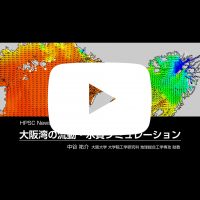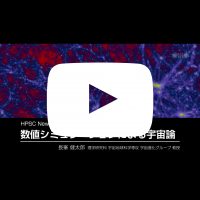HPCS News picks up researchers who conduct their advanced scientific research leveraging large-scale computer in the Cybermedia Center.

vol.05 Simulation of electrical excitation propagation in human heart
Affiliation : Professor, Department of Medical Engineering, Faculty of Health Sciences, Morinomiya University of Medical Sciences
Cardiac arrhythmias are related to abnormal electrical excitation propagation in the heart. Especially, ventricular arrhythmia may lead to sudden cardiac death. However, it is not fully understood how abnormal electrical excitation propagation affects and contributes to initiate and maintenance of ventricular arrhythmias. One of the methods to investigate the mechanisms of initiation and maintenance of the arrhythmia is to simulate electrophysiological phenomena in the heart. In our study, we constructed large scale and anatomically-detailed heart models including approximately 20 million units. Simulations are conducted with SX-ACE supercomputer at the Cybermedia Center. Our simulations suggest that abnormality of electrical excitation propagation in the right ventricular outflow tract contribute to develop and maintenance of ventricular arrhythmia. We believe that computer simulation is one of the powerful tools to analyze complicated electrical activity of the heart and find new method to treat heart diseases such as arrhythmias.

vol.04 Numerical simulation of supersonic streamwise vortices induced by a strut injector
Affiliation : Osaka Prefecture University, Graduate School of Engineering, Aerospace and Marine-System Engineering, Aerospace Engineering, Assistant Professor
The key to airbreathing hypersonic aircrafts, supersonic airplane and spaceplane, is to realize supersonic combustion ramjet (scramjet) engines. However, the residence time of air in combustor is supposed to be the order of milliseconds in terms of the length of the combustor. Under the condition, the main issue to address is effective fuel-oxidizer mixing in the engine over the short time scale of combustion. We challenge the issue using streamwise vortices induced by a strut injector, which are effective in supersonic mixing and combustion. To clarify physics and chemistry in the extreme environments (i.e., high speed, high temperature, and high pressure), supercomputers are very useful because experimental studies of supersonic combustion are difficult and expensive.

vol.03 Numerical simulation of flow and water quality in Osaka Bay
Affiliation : Osaka University, Division of Global Architecture, Graduate School of Engineering, Assistant Professor
Water pollution is a social problem in an enclosed bay with a large city, such as Osaka Bay. However, there are a lot of uncertain points in the pollution mechanism. To clarify the mechanism of water environmental degradation by reclamation, numerical analysis have conducted using a 3-D flow and water-quality model. The results indicated that coastal landform change could influence the currents and water quality not only around the reclaimed land but also in the entire bay and the adjacent seas by weakening the anticyclonic circulation flow in the bay head.

vol.02 Cosmology with Numerical Simulations
Affiliation : Osaka University, Department of Earth and Space Science, Graduate School of Science, Professor
Thanks to the explosive astronomical observations over the past two decades, humankind has obtained the expanding Big Bang Universe as a standard cosmological model. However, does such a model really reproduce the large-scale structure and galaxies that we see in the sky? Our goal is to reveal the secrets of cosmological structure formation using supercomputers in the Universe dominated by dark matter and dark energy. Our research is gradually revealing how large-scale structures, galaxies and supermassive black holes form in this Universe.

vol.01 Air flow analysis on speech production
Affiliation : Osaka University Dental Hospital, Assistant Professor
Speech is physically classified as aerodynamic acoustics, and the sound generated from the turbulence that is uttered in the oral cavity of the speaker propagates to the eardrum of the listener. This phenomenon can be visualized by using the supercomputer. In this research, as a first step, using the state-of-the-art medical imaging diagnostic apparatus, the airway shape at the time of utterance was measured and fluid simulation was carried out. In the future, by combining it with medical information, we plan to link speech information to medical information which is information of individual patients.

